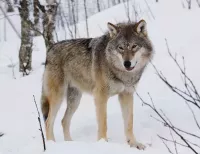Life is full of challenges, and Osama bin Laden faced many. Discover key struggles and how they were overcome.
Osama bin Laden was the founder and leader of al-Qaeda, a militant organization. He fought against the Soviet Union in Afghanistan and supported Bosnian mujahideen. Bin Laden opposed U.S. foreign policy in the Middle East, declaring war on the United States in 1996. He orchestrated and supervised the September 11 attacks in 2001, which targeted U.S. assets and resulted in significant casualties, solidifying his role as a key figure in global terrorism.
February 1989: Bin Laden's Return to Saudi Arabia
In February 1989, following the Soviet Union's withdrawal from Afghanistan, Bin Laden returned to Saudi Arabia and was regarded as a hero of jihad. He then engaged in opposition movements against the Saudi monarchy.
March 1989: Battle of Jalalabad
In March 1989, Bin Laden led 800 Arab foreign fighters during the unsuccessful Battle of Jalalabad, where he personally led his men to immobilize the 7th Sarandoy Regiment, resulting in massive casualties.
November 1990: FBI Raid on El Sayyid Nosair's Home
On November 8, 1990, the FBI raided the New Jersey home of El Sayyid Nosair, an associate of al-Qaeda operative Ali Mohamed, and discovered evidence of terrorist plots, including plans to blow up New York City skyscrapers.
1990: Bin Laden Funds Afghan Coup Attempt
In 1990, Bin Laden funded the Afghan coup d'état attempt led by General Shahnawaz Tanai, a hardcore communist. He also lobbied the Parliament of Pakistan to carry out an unsuccessful motion of no confidence against Prime Minister Benazir Bhutto.
1991: Bin Laden's Criticism and House Arrest
In 1991, Bin Laden publicly criticized Saudi dependence on U.S. forces, leading to his house arrest and eventual forced departure from the country. The U.S. 82nd Airborne Division was deployed in Dhahran.
1991: Expulsion from Saudi Arabia
In 1991, Bin Laden was expelled from Saudi Arabia after repeatedly criticizing the alliance with the United States. He and his followers moved to Afghanistan.
December 1992: Bombing of the Gold Mohur Hotel in Aden
On December 29, 1992, the Gold Mohur Hotel in Aden was bombed, resulting in two deaths. This is believed to be the first bombing attack involving Bin Laden.
1992: Al-Qaeda's Assistance to Jihadis
In 1992, Bin Laden's al-Qaeda assisted jihadis financially and militarily in Algeria, Egypt, and Afghanistan.
1993: Bin Laden Sent Aid to Algerian Islamists
In 1992 or 1993, Bin Laden sent an emissary, Qari el-Said, with $40,000 to Algeria to aid the Islamists. Their advice was heeded, resulting in a war that caused the deaths of 150,000 to 200,000 Algerians.
1993: Nosair Connected to World Trade Center Bombing
In 1993, El Sayyid Nosair was convicted in connection with the 1993 World Trade Center bombing and later admitted guilt for the murder of Rabbi Meir Kahane in New York City on November 5, 1990.
1994: Loss of Saudi Citizenship and Stipend
In 1994, King Fahd of Saudi Arabia stripped Bin Laden of his Saudi citizenship and persuaded his family to cut off his $7 million a year stipend due to Bin Laden's continued criticism of the Saudi monarchy.
1995: EIJ Attempt to Assassinate Hosni Mubarak and Al-Qaeda's Justification for Killing Innocents
In 1995, the EIJ attempted to assassinate Egyptian President Hosni Mubarak, which failed, leading al-Qaeda to develop its justification for the killing of innocent people via a fatwa issued by Mamdouh Mahmud Salim.
1995: Sudan's Offer to Expel Bin Laden
In late 1995, the State Department and the CIA learned that Sudanese officials were discussing with the Saudi government the possibility of expelling Bin Laden. US Ambassador Timothy Carney encouraged the Sudanese to pursue this course, but Saudis did not want Bin Laden because they had already revoked his citizenship.
February 1996: Sudan's Secret Discussions to Expel Bin Laden
In February 1996, Sudanese officials began secret meetings with Saudi officials, offering to expel Bin Laden to Saudi Arabia if they would pardon him. The US became aware of these discussions, but Saudi officials did not want Bin Laden in their country.
May 1996: Bin Laden's Expulsion to Afghanistan
On May 18, 1996, due to increasing pressure on Sudan, Bin Laden was permitted to leave for Jalalabad, Afghanistan, where he developed a close relationship with Mullah Omar. The expulsion significantly weakened Bin Laden and his organization.
August 1996: Bin Laden's Declaration of War
In August 1996, Bin Laden issued a fatawā titled "Declaration of War against the Americans Occupying the Land of the Two Holy Places", published by Al-Quds Al-Arabi, criticizing U.S. forces in Saudi Arabia.
June 1998: Bin Laden indicted by U.S. grand jury
On June 8, 1998, Osama bin Laden was first indicted by a grand jury of the U.S. on charges of conspiracy to attack defense utilities of the U.S. and for being the head of al-Qaeda.
August 1998: U.S. missile strikes on Bin Laden's training camps
On August 20, 1998, 66 cruise missiles launched by U.S. Navy ships struck Bin Laden's training camps near Khost in Afghanistan, missing him by a few hours. The Clinton administration had authorized the CIA to apprehend Bin Laden, dead or alive, following the 1998 embassy attacks.
August 1998: U.S. retaliates for embassy bombings with missile strikes
On August 20, 1998, in retaliation for the embassy bombings, U.S. President Bill Clinton ordered cruise missile strikes on Bin Laden-related targets in Sudan and Afghanistan.
November 1998: Bin Laden indicted for 1998 embassy attacks
On November 4, 1998, Osama bin Laden was indicted by a Federal Grand Jury in the United States District Court for the Southern District of New York, on charges related to the 1998 embassy attacks. Evidence included testimony by former al-Qaeda members and satellite phone records.
December 1998: CIA reports al-Qaeda preparing for attacks in the U.S.
In December 1998, the CIA reported to Clinton that al-Qaeda was preparing for attacks in the U.S., including training personnel to hijack aircraft.
1998: Indictment of Bin Laden for capital crimes in the 1998 embassy attacks
In 1998, Osama bin Laden was indicted along with others for capital crimes in the 1998 embassy attacks.
1998: Indictment for 1998 embassy attack
In October 2001, Osama bin Laden appeared on the initial list of the top 22 FBI Most Wanted Terrorists, which was based on the indictment for the 1998 embassy attack.
June 1999: Bin Laden added to FBI Ten Most Wanted Fugitives list
On June 7, 1999, Osama bin Laden became the 456th person listed on the FBI Ten Most Wanted Fugitives list, following his indictment for capital crimes in the 1998 embassy attacks.
June 1999: FBI places Bin Laden on Ten Most Wanted list
On June 7, 1999, the FBI placed Osama bin Laden on its Ten Most Wanted list.
October 15, 1999: UN designates al-Qaeda as a terrorist organization
On October 15, 1999, the United Nations designated al-Qaeda as a terrorist organization through UN Security Council Resolution 1267, which aimed to impose sanctions on individuals and entities associated with al-Qaeda.
1999: Aborted plan to capture or kill Bin Laden
In 1999, the CIA and Pakistani military intelligence prepared a team to capture or kill Bin Laden in Afghanistan, but the plan was aborted due to the 1999 Pakistani coup d'état.
2000: Failed assassination attempt on Bin Laden
In 2000, foreign operatives working for the CIA fired a rocket-propelled grenade at a convoy of vehicles in which Bin Laden was traveling in Afghanistan, hitting one vehicle but not the one Bin Laden was in.
2000: State Department Authorizes U.S. Intelligence Officials to Visit Sudan
In 2000, the U.S. State Department authorized U.S. intelligence officials to visit Sudan, after initially refusing to meet with them even after Sudan had expelled Bin Laden.
August 2001: Intelligence report on Bin Laden's plans to strike in U.S.
On August 6, 2001, U.S. president George W. Bush received an intelligence report titled "Bin Laden Determined to Strike in U.S."
October 2001: Bombing of Afghanistan
In October 2001, attempts at assassination and requests for the extradition of Bin Laden from the Taliban of Afghanistan were met with failure before the bombing of Afghanistan.
October 2001: Bin Laden on FBI Most Wanted List
On October 10, 2001, Osama bin Laden was added to the FBI's list of Top 22 Most Wanted Terrorists, based on the indictment for the 1998 embassy attacks.
2001: Believed hiding in White Mountains during Battle of Tora Bora
In late 2001, Osama bin Laden was believed to be hiding in the White Mountains (Spin Ghar) in Afghanistan's east, near the Pakistani border, during the Battle of Tora Bora. A failure by the U.S. to commit enough U.S. ground troops to hunt him led to his escape.
2004: Bin Laden Speaks of Bleeding America
In 2004, Osama bin Laden spoke of "bleeding America to the point of bankruptcy" in a tape broadcast by Al Jazeera, outlining his strategy of luring enemies into long wars of attrition.
2005: CIA Unit Shut Down
In late 2005, the CIA unit dedicated to capturing Osama bin Laden was shut down.
August 2007: US and Afghanistan forces raid mountain caves in Tora Bora
Between August 14 and 16, 2007, U.S. and Afghanistan forces raided the mountain caves in Tora Bora after receiving intelligence of a pre-Ramadan meeting held by al-Qaeda members. They did not find either Bin Laden or al-Zawahiri.
February 2009: Taliban Detainee Claims Bin Laden Sighting in Afghanistan
Early in December 2009, a Taliban detainee in Pakistan said he had information that Bin Laden was in Afghanistan that year; he said that in January or February 2009, he met a trusted contact who had seen Bin Laden in Afghanistan about 15 to 20 days earlier.
March 2009: Hunt for Bin Laden Centered in Chitral District
In March 2009, it was reported that the hunt for Osama bin Laden had centered in the Chitral District of Pakistan, including the Kalam Valley. Pakistan's Prime Minister Gillani rejected claims that Osama bin Laden was hiding in Pakistan.
December 2009: US Officials Comment on Bin Laden's Whereabouts
In December 2009, U.S. Secretary of Defense Robert Gates stated the United States had no reliable information on Osama bin Laden's whereabouts in years. General Stanley McChrystal indicated that al-Qaeda could not be defeated unless Bin Laden was captured or killed.
June 2010: Report of Bin Laden Hiding in Iran
On June 7, 2010, the Kuwaiti newspaper Al-Seyassah reported that Osama bin Laden was hiding out in the mountainous town of Sabzevar, in northeastern Iran. This report turned out to be false.
Mentioned in this timeline
TikTok also known as Douyin in China is a social...

Bill Clinton the nd U S President - served as...

George W Bush the rd U S President - is...

Barack Obama the th U S President - was the...
Saudi Arabia officially the Kingdom of Saudi Arabia KSA is...
Sudan officially the Republic of the Sudan is a country...
Trending
1 month ago India-Bangladesh Ties Strained as Hasina Faces Potential Execution; Extradition Unlikely.
1 month ago Tesla Approved to Launch Autonomous Rideshare Service in Arizona: A New Era
Jaden McDaniels is an American professional basketball player currently playing for the Minnesota Timberwolves in the NBA He played college...

9 months ago Dire Wolf's potential return clashes with Trump's endangered species policy; de-extinction questioned.

28 days ago Trump Pardons Gobble and Waddle: A Thanksgiving Tradition Continues with Presidential Humor.

1 month ago Peyton Watson's Opportunity: Millions on Nuggets Roster and Denver Breakout Potential.
Popular

Ben Shapiro is a prominent American conservative political commentator media...

XXXTentacion born Jahseh Dwayne Ricardo Onfroy was a controversial yet...

Candace Owens is an American conservative political commentator and author...

William Franklin Graham III commonly known as Franklin Graham is...
The Kennedy Center Honors are annual awards recognizing individuals and...

John F Kennedy JFK was the th U S President...
